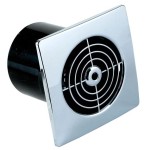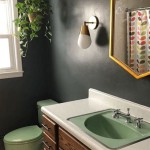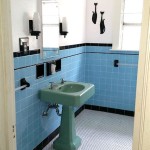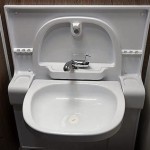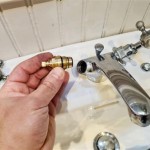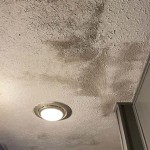Understanding Bathroom Sink Shut Off Valves
Bathroom sink shut off valves are essential components in plumbing systems, providing a convenient and reliable way to control water flow to the sink. These valves allow homeowners to easily turn off the water supply to the sink for repairs, maintenance, or even during emergencies. Understanding the function, location, and types of bathroom sink shut off valves is vital for both homeowners and plumbers alike.
Function and Location
The primary function of a bathroom sink shut off valve is to isolate the water supply to the sink. When turned off, the valve prevents water from flowing through the pipe to the faucet, allowing for safe and convenient work on the sink, faucet, or plumbing lines. These valves are typically located underneath the sink, often within a cabinet or behind a panel. They are usually positioned on the water supply lines leading to the sink, typically one for hot water and one for cold water.
The location of the valve can vary depending on the age of the house and the specific plumbing design. In older homes, the valves might be located on the wall behind the sink, while newer homes often incorporate them within the cabinet beneath the sink. Identifying the location of these valves is crucial before undertaking any plumbing repairs or maintenance, as it allows for the safe and efficient isolation of the water supply to the sink.
Types of Bathroom Sink Shut Off Valves
Bathroom sink shut off valves come in various types, each with its unique advantages and disadvantages. The most common types include:
1. Compression Valves
Compression valves are a traditional type of shut off valve featuring a threaded stem that compresses a rubber washer against a seat to control water flow. They are typically identified by a square-shaped handle and are relatively affordable. However, compression valves can be prone to leaks over time, especially if the rubber washer deteriorates or becomes worn.
2. Ball Valves
Ball valves utilize a rotating ball with a hole through its center to control water flow. They are known for their ease of use, durability, and quick on/off action. Ball valves typically feature a lever-style handle and are available in both quarter-turn and full-turn varieties. They are generally more expensive than compression valves but offer superior performance and longevity.
3. Gate Valves
Gate valves use a wedge-shaped gate to regulate water flow. They are often chosen for their durability and ability to handle high pressures, although they can be slow to operate. Gate valves typically feature a handwheel for operation and require several turns to completely open or close. They are less common in bathroom sink applications but might be found in older homes or for specific plumbing configurations.
4. Needle Valves
Needle valves utilize a cone-shaped needle to precisely control the flow of water. They are often used in applications requiring fine adjustments of water flow, such as adjusting the pressure of a shower head. Needle valves usually feature a small, round handle and are generally more expensive than other types of valves. Their precise control makes them suitable for specific situations but less common for general bathroom sink shut off applications.
Maintenance and Repair
Regular maintenance and timely repairs are essential for keeping bathroom sink shut off valves functioning efficiently. Here are some key aspects of maintaining these valves:
1. Inspecting for Leaks
Regularly inspect shut off valves for leaks, especially around the valve stem, handle, and connections. Leaks indicate potential problems and should be addressed promptly to prevent further damage and water waste. A small drip can turn into a significant leak over time, leading to increased water bills and potential damage to the surrounding structure.
2. Lubricating the Valve Stem
Lubricate the valve stem periodically, especially in compression valves, to ensure smooth operation and prevent binding. A small amount of petroleum jelly or silicone grease applied to the stem threads can prevent corrosion and facilitate easier turning. However, it is crucial to avoid applying excessive lubricant, as it could hinder the valve's ability to seal properly.
3. Replacing Worn Parts
Replace worn parts like rubber washers, O-rings, or packing nuts as needed. These components are prone to deterioration over time, especially in older valves, leading to leaks and malfunctioning. Regular inspection and timely replacement of worn parts can ensure the valve's long-term performance and prevent future plumbing issues.
4. Professional Repair
If you encounter significant leaks, difficulty operating the valve, or suspect a more complex issue, it is recommended to seek professional assistance from a qualified plumber. Attempting to repair the valve without proper expertise can lead to further damage and potential hazards.
Understanding the function, types, and maintenance requirements of bathroom sink shut off valves is paramount for homeowners. By ensuring these valves are in good working order, residents can prevent leaks, minimize water waste, and maintain a safe and functional plumbing system.

How To Replace A Leaking Shutoff Valve Under Sink

Handle Broke Off On Shut Valve Under Sink Diy Plumbing Repair Bathroom

Know Types Of Shut Off Stop Valve Explained Qs Supplies

11 Types Of Main Water Shut Off Valves Explained

Stop Plumbing Leaks With Ball Type Shutoff Valves Diy Family Handyman

How To Shut Off Your Main Water Valve Ranshaw

Types Of Under Sink Shutoff Valves Kitchen Infinity

How To Install Water Shut Off Valve For Sinks

Sharkbite 1 2 In Push To Connect X 3 8 O D Compression Chrome Plated Brass Quarter Turn Angle Stop Valve 23036 0000lf The Home Depot
Emergency Water Shut Off Celina Tx Life Connected
Related Posts

